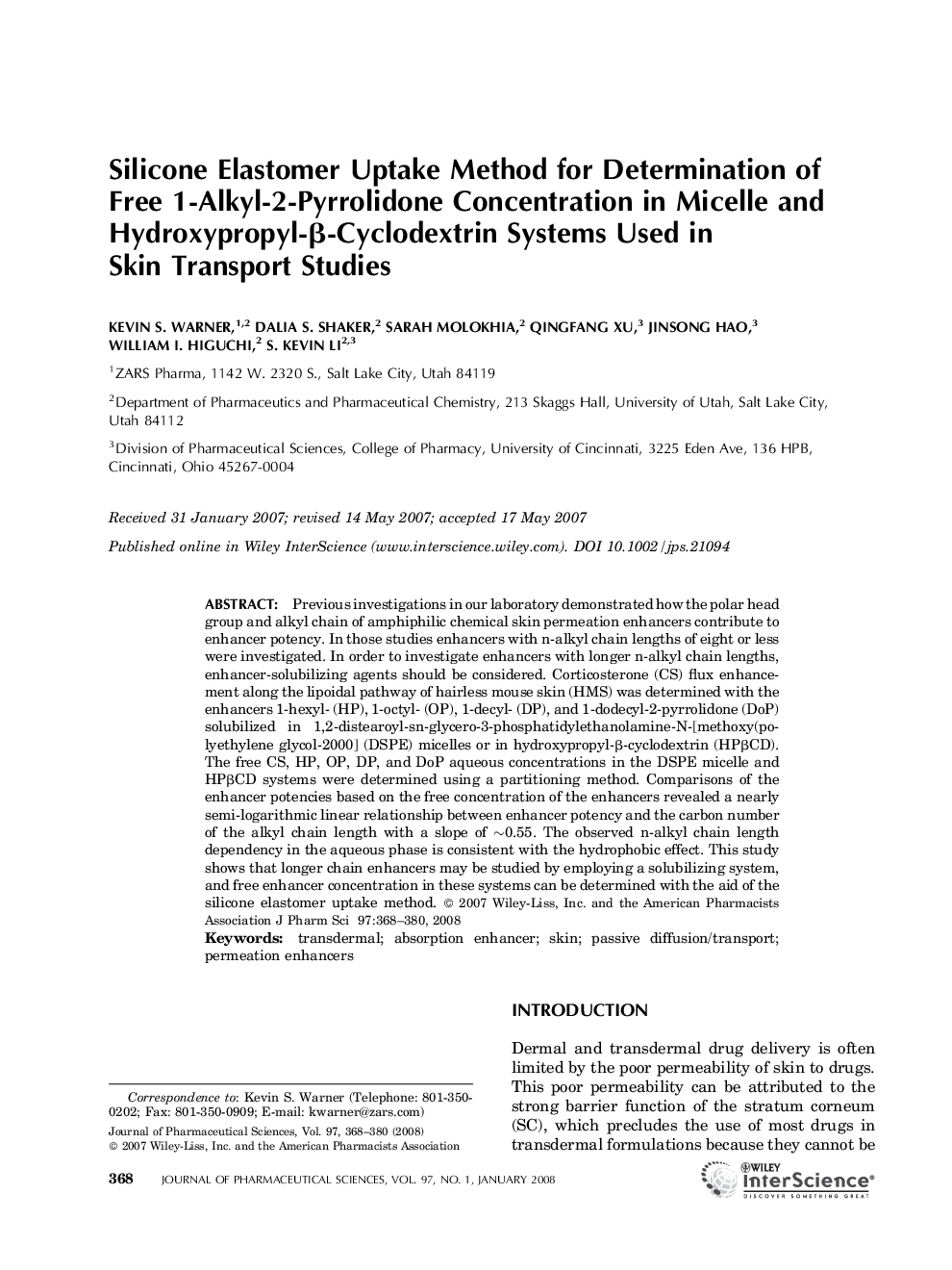| Article ID | Journal | Published Year | Pages | File Type |
|---|---|---|---|---|
| 2487603 | Journal of Pharmaceutical Sciences | 2008 | 13 Pages |
ABSTRACTPrevious investigations in our laboratory demonstrated how the polar head group and alkyl chain of amphiphilic chemical skin permeation enhancers contribute to enhancer potency. In those studies enhancers with n‐alkyl chain lengths of eight or less were investigated. In order to investigate enhancers with longer n‐alkyl chain lengths, enhancer‐solubilizing agents should be considered. Corticosterone (CS) flux enhancement along the lipoidal pathway of hairless mouse skin (HMS) was determined with the enhancers 1‐hexyl‐ (HP), 1‐octyl‐ (OP), 1‐decyl‐ (DP), and 1‐dodecyl‐2‐pyrrolidone (DoP) solubilized in 1,2‐distearoyl‐sn‐glycero‐3‐phosphatidylethanolamine‐N‐[methoxy(polyethylene glycol‐2000] (DSPE) micelles or in hydroxypropyl‐β‐cyclodextrin (HPβCD). The free CS, HP, OP, DP, and DoP aqueous concentrations in the DSPE micelle and HPβCD systems were determined using a partitioning method. Comparisons of the enhancer potencies based on the free concentration of the enhancers revealed a nearly semi‐logarithmic linear relationship between enhancer potency and the carbon number of the alkyl chain length with a slope of ∼0.55. The observed n‐alkyl chain length dependency in the aqueous phase is consistent with the hydrophobic effect. This study shows that longer chain enhancers may be studied by employing a solubilizing system, and free enhancer concentration in these systems can be determined with the aid of the silicone elastomer uptake method. © 2007 Wiley‐Liss, Inc. and the American Pharmacists Association J Pharm Sci 97:368–380, 2008
